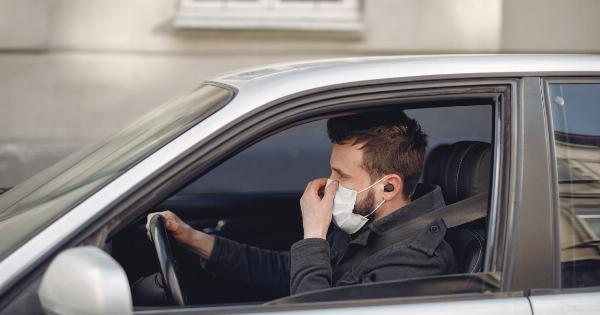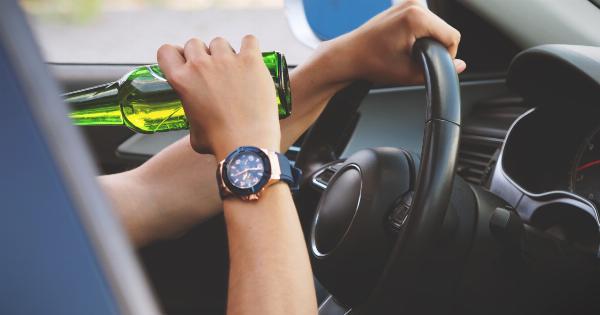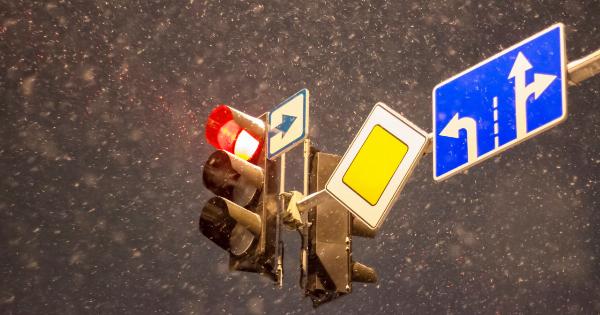In recent years, there has been an alarming trend of pedestrian injuries around the world. With the rise in population, urbanization, and motor vehicle usage, the vulnerability of pedestrians has become a major concern.
Pedestrian injuries not only cause immense physical and emotional suffering but also have a significant economic impact. This article explores the factors contributing to the rise in pedestrian injuries and suggests measures that can be taken to mitigate this growing problem.
Factors Contributing to Pedestrian Injuries
Several factors have contributed to the increasing number of pedestrian injuries in recent times. Understanding these factors is crucial to formulating effective strategies to tackle this issue. The following are some of the significant factors:.
1. Distracted Driving and Walking
In the age of smartphones and constant connectivity, distracted driving has emerged as a major cause of pedestrian injuries.
Motor vehicle operators often engage in activities like texting, calling, or using social media while driving, diverting their attention from the road. Similarly, pedestrians distracted by their phones or other devices often fail to notice oncoming vehicles, increasing their chances of getting hit.
2. Speeding Vehicles
Speeding vehicles pose a grave threat to pedestrians. When a vehicle is traveling at high speeds, the chances of severe injuries or fatalities increase significantly in the event of a collision.
Speeding motorists have reduced reaction time, making it difficult for them to avoid accidents even if they spot pedestrians.
3. Lack of Pedestrian Infrastructure
Many cities and towns lack proper pedestrian infrastructure, such as sidewalks, crosswalks, and pedestrian bridges. This forces pedestrians to share roads with motor vehicles, increasing the likelihood of accidents.
Additionally, poorly designed or maintained pedestrian infrastructure may pose hazards such as uneven pavements, inadequate lighting, or lack of signage.
4. Drunk Driving and Pedestrian Intoxication
Driving under the influence of alcohol or drugs significantly impairs the judgment and reaction time of motorists, making them more likely to be involved in pedestrian accidents.
Similarly, impaired pedestrians are more vulnerable to accidents due to impaired coordination, slower reflexes, and impaired judgment.
5. Aggressive Driving Behavior
Aggressive driving behavior, such as tailgating, excessive honking, or disobeying traffic laws, not only increases the risk of vehicle-to-vehicle collisions but also poses a danger to pedestrians.
Aggressive drivers are more likely to engage in risky maneuvers that could lead to accidents involving pedestrians.
6. Insufficient Traffic Laws and Enforcement
Sometimes, the lack of adequate traffic laws or their lax enforcement contributes to the risk of pedestrian injuries. In some areas, traffic laws may not prioritize pedestrian safety, leading to increased vulnerability.
Additionally, inadequate enforcement of existing laws allows reckless drivers to go unpunished, further endangering pedestrians.
7. Poor Visibility
Poor visibility, especially during bad weather conditions or at nighttime, increases the chances of pedestrian accidents.
Reduced visibility may make it difficult for motorists to spot pedestrians, even when they are at designated crosswalks or sidewalks. Similarly, pedestrians may struggle to see oncoming vehicles, putting themselves at risk.
8. Urbanization and Population Density
As urban areas continue to expand and population density rises, the risk of pedestrian injuries also increases. High levels of vehicle and pedestrian traffic in congested urban areas amplify the likelihood of accidents.
Moreover, urbanization often leads to increased vehicle usage and limited space for pedestrians – exacerbating the hazards.
9. Inadequate Pedestrian Education
A lack of pedestrian education and awareness campaigns can contribute to pedestrian injuries. Many pedestrians, especially children and the elderly, may not be aware of the best practices for road safety.
Inadequate knowledge about pedestrian rights, traffic signals, and safe crossing techniques can make them vulnerable to accidents.
10. Cultural and Social Attitudes
Cultural and social attitudes that prioritize motor vehicle usage over pedestrian safety can also contribute to the alarming trend of pedestrian injuries.
In some societies, pedestrians are marginalized, and streets are designed primarily for vehicle traffic. This lack of consideration for pedestrians’ safety heightens the risk of accidents.
Measures to Mitigate Pedestrian Injuries
To address this urgent issue, a multi-faceted approach is necessary. Here are some measures that can be taken to mitigate pedestrian injuries:.
1. Improve Pedestrian Infrastructure
Cities and towns should prioritize the development of comprehensive pedestrian infrastructure. This includes building and maintaining sidewalks, crosswalks, footbridges, and adequate lighting.
Traffic calming measures, such as speed bumps or roundabouts, should also be implemented in high-risk areas to reduce vehicle speeds.
2. Enhance Traffic Law Enforcement
Strict enforcement of traffic laws, especially regarding speeding, distracted driving, and drunk driving, is crucial to curbing pedestrian injuries.
Increased fines, penalties, and license suspensions should be implemented to deter reckless driving behavior. Automated enforcement systems, such as speed cameras and red-light cameras, can also contribute to improved compliance.
3. Promote Pedestrian Education and Awareness
Education campaigns targeting pedestrians and motorists should be conducted to raise awareness about road safety.
Pedestrian education programs in schools, community centers, and workplaces can teach pedestrians of all ages about safe walking strategies, recognizing road dangers, and understanding traffic signs and signals.
4. Implement Smart City Technologies
Smart city technologies, such as intelligent crosswalks equipped with sensors and signals, can enhance pedestrian safety. These technologies can detect the presence of pedestrians and adjust traffic signals accordingly.
Additionally, vehicle-to-pedestrian communication systems can alert drivers to the presence of pedestrians, reducing the risk of accidents.
5. Encourage Alternative Transportation Methods
Encouraging the use of alternative transportation methods, such as walking, cycling, or public transport, can help reduce the number of vehicles on the road.
Promoting pedestrian-friendly neighborhoods and designing cities with walkability in mind can make walking a safer and more viable option.
6. Engage Local Communities
Engaging local communities in road safety initiatives can foster a sense of ownership and responsibility.
Community-driven initiatives, such as pedestrian safety committees or neighborhood watch programs, can educate residents about pedestrian safety, identify problem areas, and propose solutions in collaboration with local authorities.
Conclusion
The alarming trend of pedestrian injuries demands immediate attention and concerted efforts from governments, urban planners, law enforcement agencies, and communities.
By addressing the contributing factors and implementing comprehensive strategies, it is possible to create safer environments for pedestrians. Protecting the lives and well-being of pedestrians should be a shared priority globally.






























